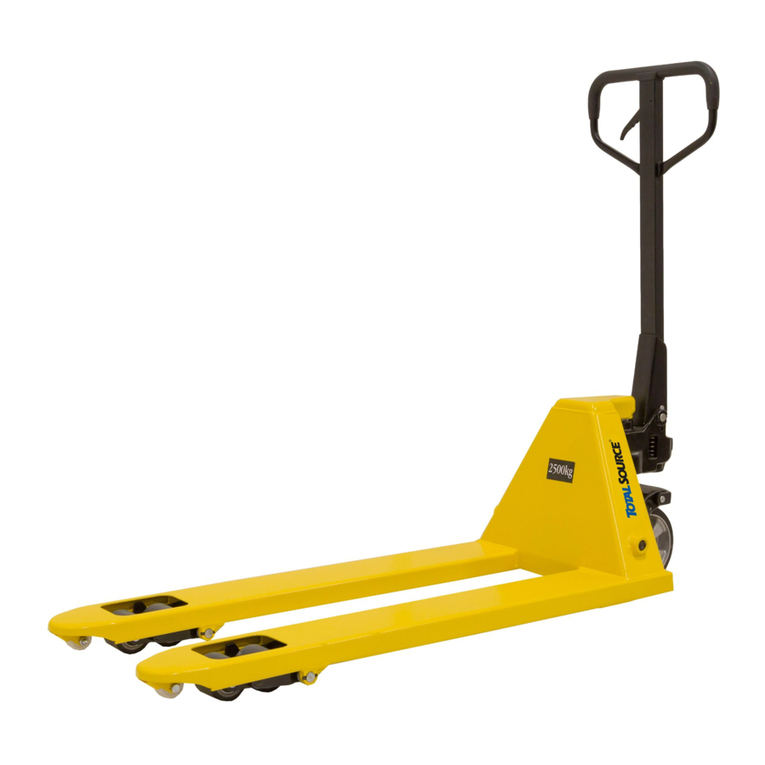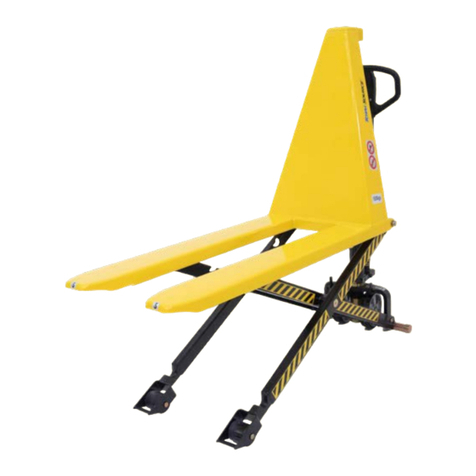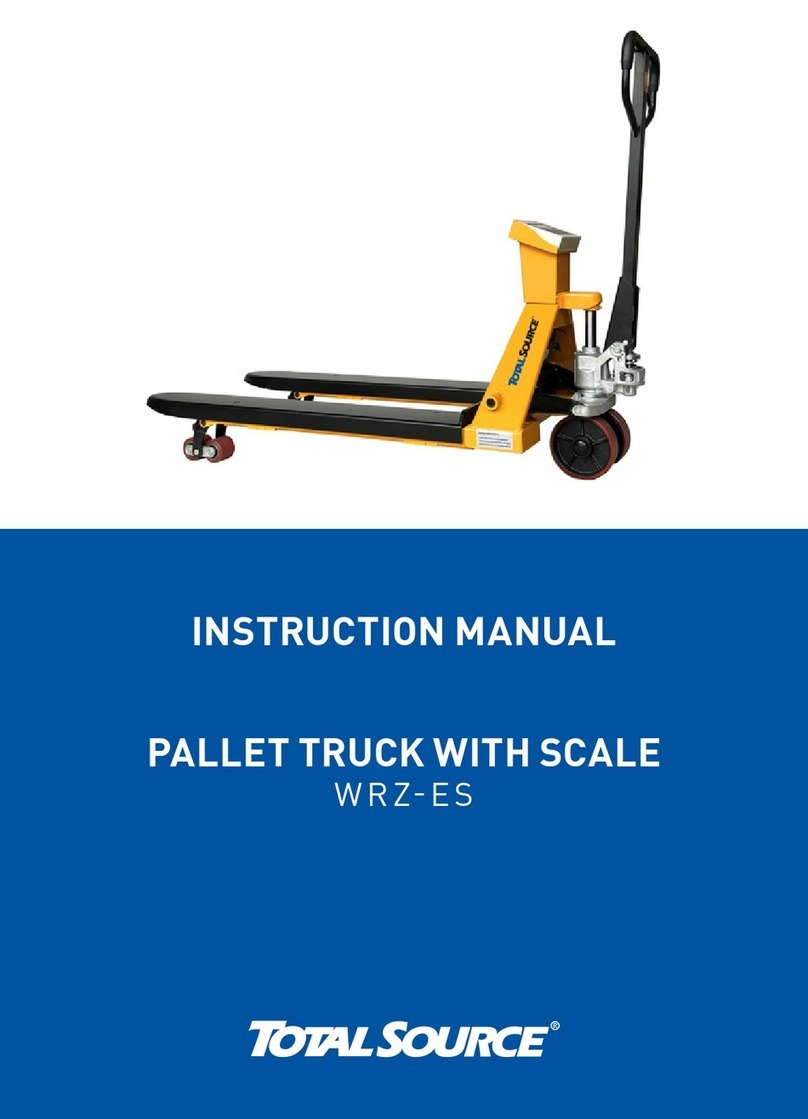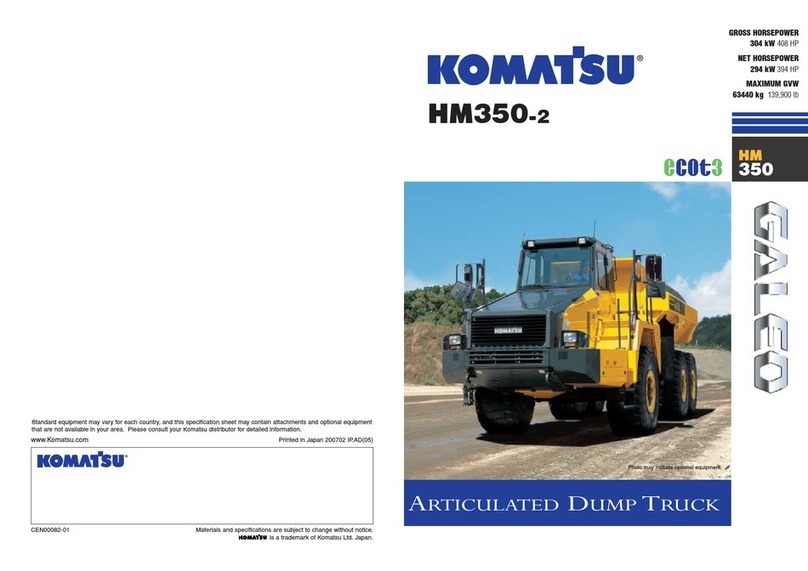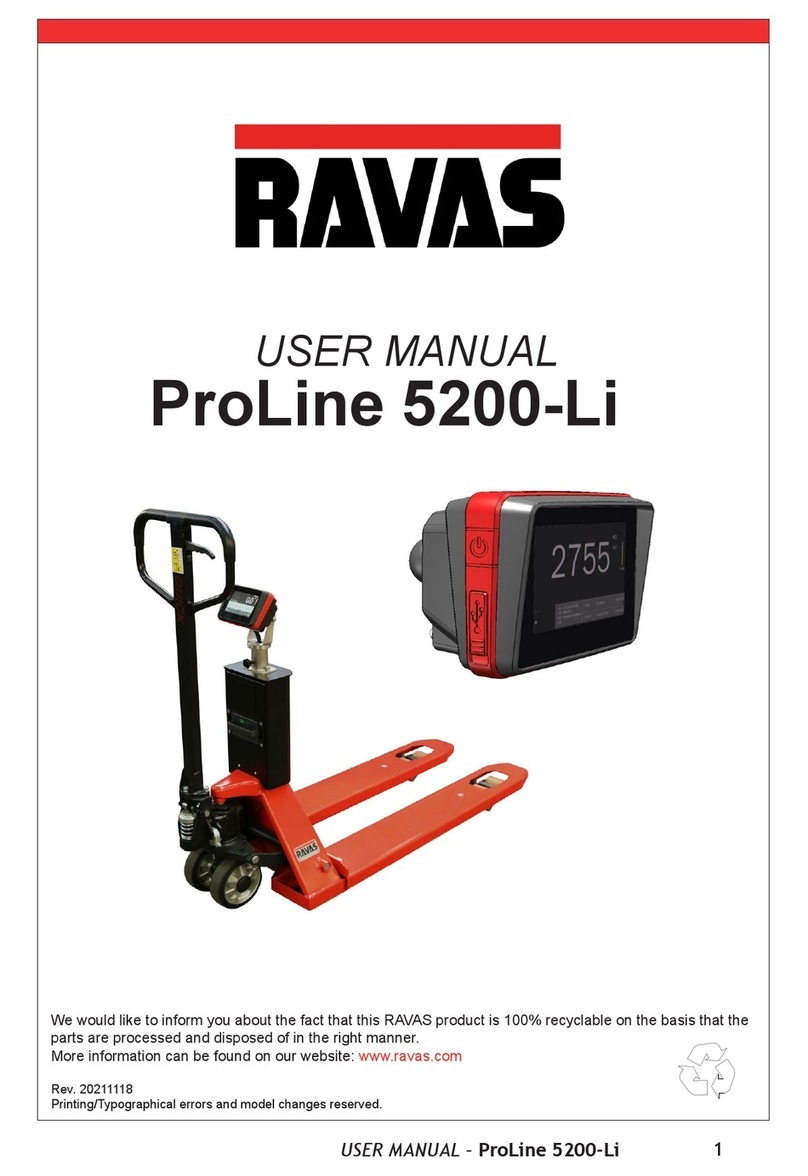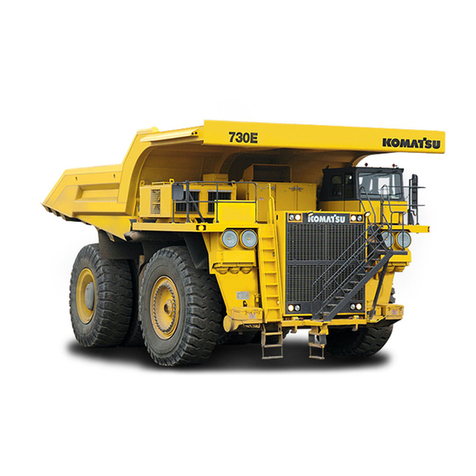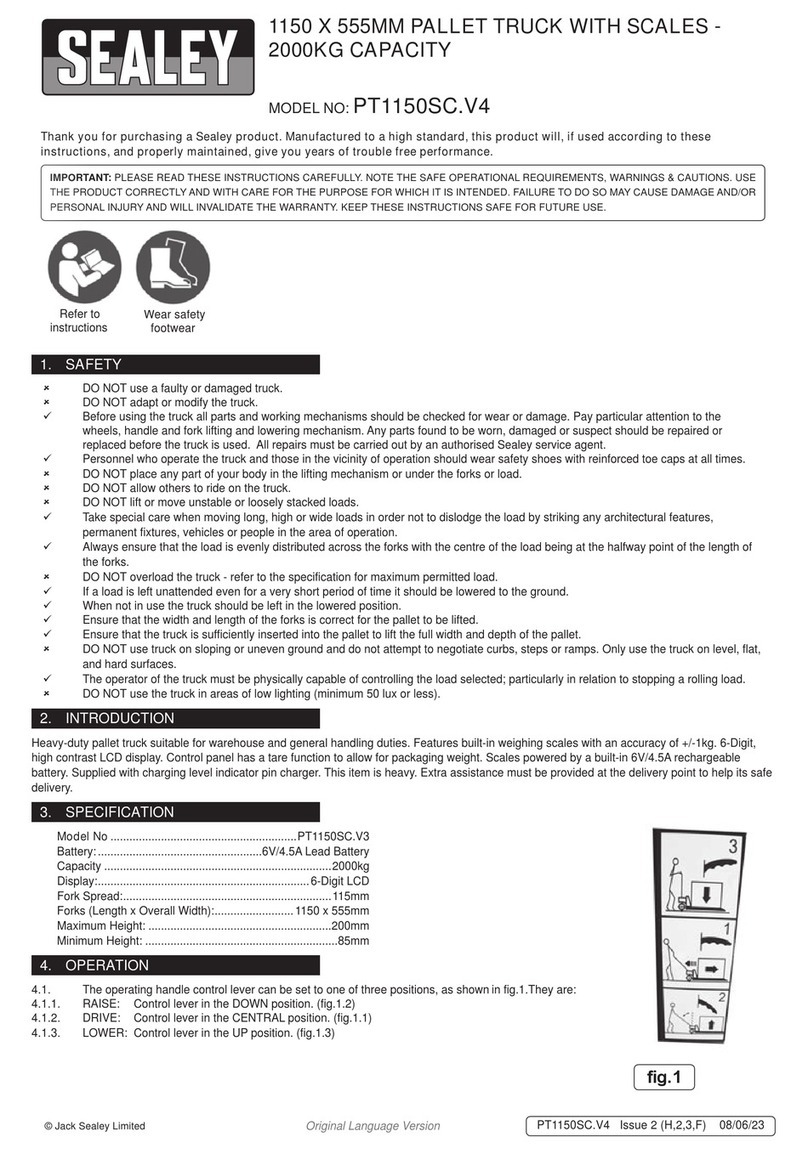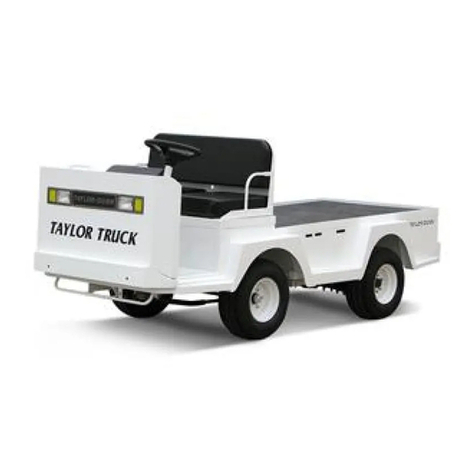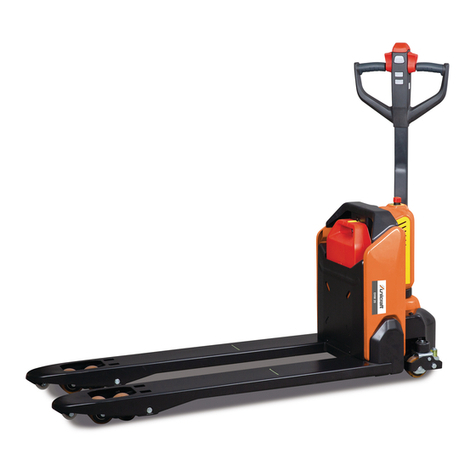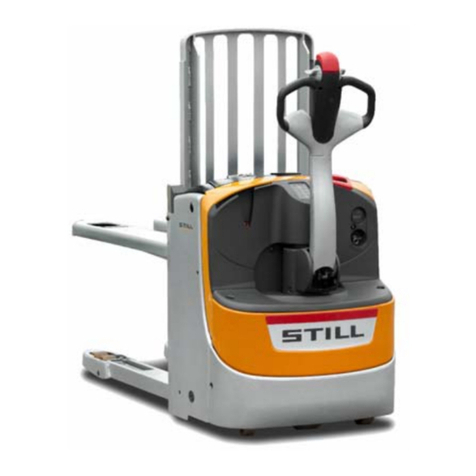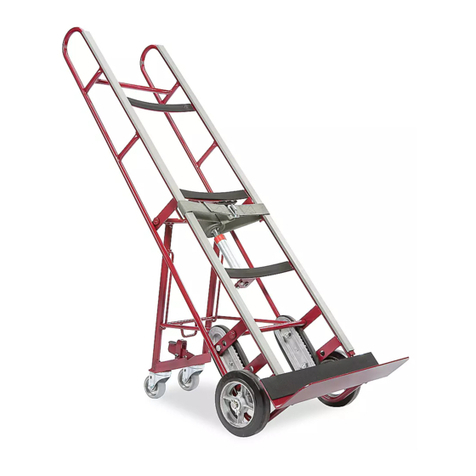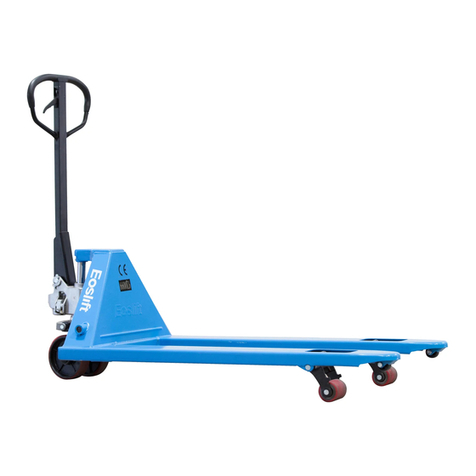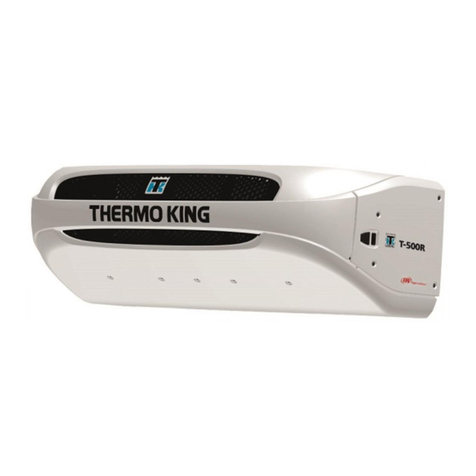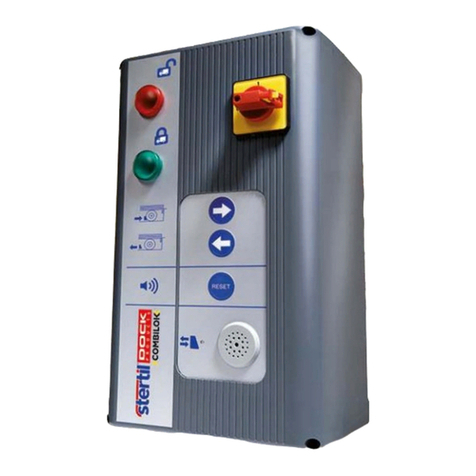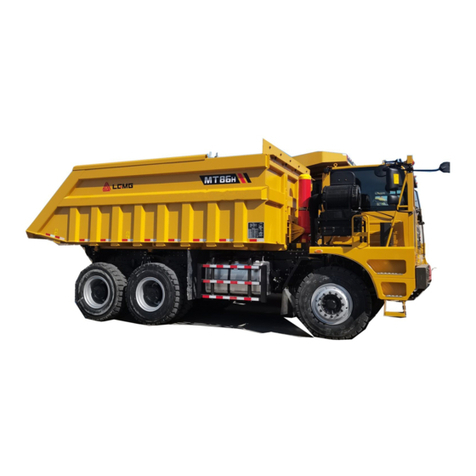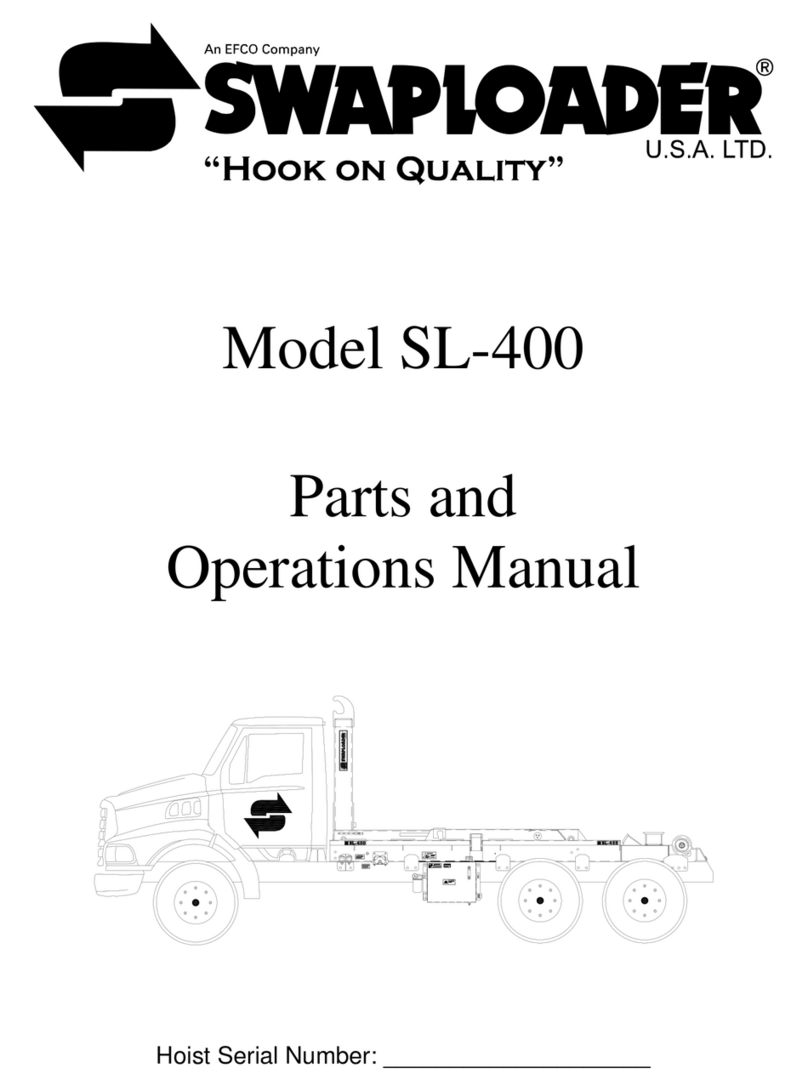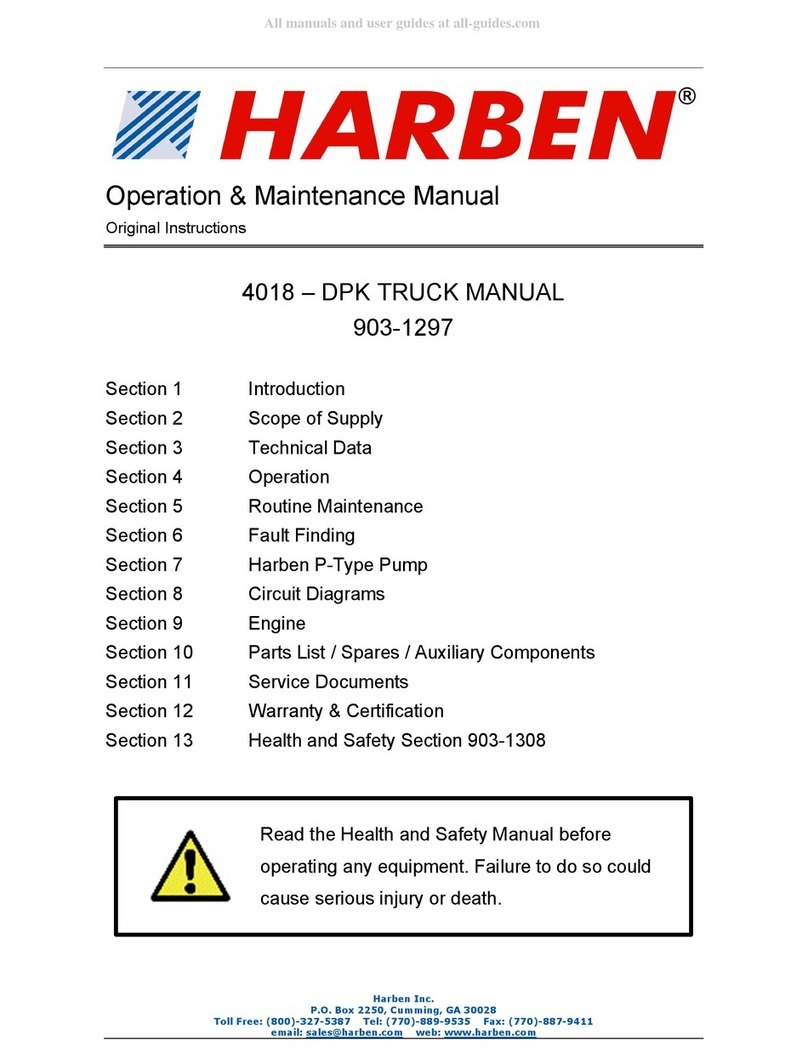Total Source TRW0009 User manual

OPERATING MANUAL
MANUAL WEIGHING PALLET TRUCK
TRW0009
Original operating
manual
06/2022 – V01

2/40
© 06-2022. TVH
®
and TotalSource
®
are registered trademarks. TVH Parts Holding NV, Brabantstraat 15, B-8790 Waregem. All rights reserved.
No part of this publication may be reproduced or communicated in any form or by any means, electronic or mechanical, including copying,
recording or use in an information storage or retrieval system, without prior and explicit permission of TVH Parts Holding NV. Printing errors
reserved. Photographs and illustrations are included for reference purposes only.
Responsible editor: TVH Parts Holding NV, Brabantstraat 15, BE-8790 Waregem
TVH is a supplier of after-market spare parts and accessories that are suitable for the maintenance and repair of OEM equipment.

3/40
www.tvh.com/TRW0009_RV01
BG Bulgarian Можете да намерите това ръководство на Вашия език чрез линка, посочен по–
долу.
CS Czech Tento návod najdete ve svém jazyce prostřednictvím odkazu níže.
DA Danish Du kan finde denne vejledning på dit sprog via nedenstående link.
DE German Sie finden diese Bedienungsanleitung in Ihrer Sprache unter folgendem Link.
EL Greek Μπορείτε να βρείτε αυτό το εγχειρίδιο στη γλώσσα σας μέσω του παρακάτω
συνδέσμου.
EN English You can find this manual in your language via below link.
ES Spanish Encontrarás este manual en tu propio idioma a través del siguiente enlace.
ET Estonian Oma emakeelse juhendi leiate allolevalt lingilt.
FI Finnish Löydät tämän manuaalin omalla kielelläsi alla olevan linkin takaa.
FR French Vous trouverez ce manuel dans votre langue via le lien ci-dessous.
GA Irish Tá an lámhleabhar seo ar fáil i do theanga tríd an nasc thíos.
HR Croatian Ovaj prirucnik mozete pronaci na svom jeziku putem donjeg linka.
HU Hungarian Ez a kézikönyv az Ön nyelvén az alábbi link alatt található.
IS Icelandic Hægt er að finna þessa handbók á þínu tungumáli á tenglinum hér að neðan.
IT Italian Cliccando sul link sottostante troverai il manuale nella tua lingua.
LT Lithuanian Šį vadovlėlį savo kalba rasite spustelėję žemiau esančią nuorodą.
LV Latvian Rokasgrāmatu latviešu valodā Jūs varat atrast izmantojot zemāk esošo saiti.
MT Maltese Tista’ ssib dan il-manwal bil-lingwa tiegħek permezz tal-link ta’ hawn taħt.
NL Dutch Je vindt deze handleiding in jouw taal via onderstaande link.
NO Norwegian Du finner denne håndboken på ditt språk via linken nedenfor.
PL Polish Niniejsza instrukcja obsługi dostępna jest w Twoim języku za pośrednictwem
poniższego linku.
PT Portuguese Pode encontrar este manual no seu idioma através do link abaixo.
RO Romanian Puteți găsi acest manual în limba dvs. prin link-ul de mai jos.
SK Slovak Manuál vo vašom jazyku môžete nájst v priloženom vysvietenom riadku.
SL Slovenian Ta priročnik najdete v svojem jeziku preko spodnje povezave.
SV Swedish Du kan hitta denna manual på ditt språk via länken nedan.
TR Turkish Bu kılavuzu aşağıdaki bağlantıdan kendi dilinizde bulabilirsiniz.

4/40
Thank you for using our product. For your safety and to ensure a correct operation, we would
like to bring to your attention some aspects of this manual:
• This booklet supplies useful instructions for the correct operation and maintenance of the
product. It is therefore necessary to pay the utmost attention to all of the paragraphs that
illustrate the most simple and secure way to operate and use this product.
• This booklet must be considered an integral part of the machine and must be included
with the deed of sale.
• Neither this publication, nor part of it, can be reproduced without written authorisation on
the part of the manufacturer.
• All of the information reported herein is based on data available at the moment of printing;
the manufacturer reserves the right to carry out modifications to its own products at any
moment, without notice and without incurring in any sanction. It is therefore suggested to
always check for possible updates.
The person responsible for the use of the product must make sure that all of the safety rules
in force in the country of its use are applied, to guarantee that the equipment is used in
conformity with the use for which it is destined and to avoid any dangerous situation for the
user.
The following warning signs are used in this manual to warn you for dangers and risks:
Informative, be careful.
Warning, can lead to injury and damage if instructions aren’t followed.
Danger, can lead to serious or fatal injury and serious damage if instructions
aren’t followed.
The following conventions are used in this manual:
1 Right
2 Left
3Front
4 Back
5Top
6 Bottom
2
5
4
1
36

5/40
TABLE OF CONTENTS
1. INTRODUCTION..................................................................................... 6
2. DESCRIPTION....................................................................................... 7
2.1. Technical data .......................................................................................7
2.2. Main components of the product.................................................................8
2.3. Placement of the decals...........................................................................8
2.4. Type plate. . . . . . . . . . . . . . . . . . . . . . . . . . . . . . . . . . . . . . . . . . . . . . . . . . . . . . . . . . . . . . . . . . . . . . . . . . . . . . . . . . . . . . . . . . . . . 9
3. SAFETY INSTRUCTIONS.........................................................................10
3.1. Explanation of the safety decals ................................................................10
3.2. General safety instructions ......................................................................11
3.3. Safety instructions for the use of batteries ...................................................12
4. TRANSPORT AND STORAGE ....................................................................13
4.1. Parking the pallet truck ..........................................................................13
4.2. Transporting the pallet truck ....................................................................13
5. ASSEMBLY AND INSTALLATION ...............................................................14
5.1. Packing list..........................................................................................14
5.2. Safety instructions for assembly and installation of the product .........................14
5.3. Required material for assembly.................................................................14
5.4. Assembly of the product..........................................................................14
6. OPERATION.........................................................................................15
6.1. Safety instructions for operating the product ................................................15
6.2. Operating instructions ............................................................................15
7. OPERATING THE WEIGHING SYSTEM ........................................................19
7.1. Touch panel display................................................................................19
7.2. Changing the batteries............................................................................20
7.3. Start-up..............................................................................................21
7.4. Zeroing...............................................................................................21
7.5. Using Tare ...........................................................................................21
7.6. Select Weighing Unit ..............................................................................21
7.7. Check weighing & Check counting .............................................................22
7.8. Accumulation.......................................................................................23
7.9. Parts Counting .....................................................................................24
7.10 Average Weighing..................................................................................24
7.11 Auto power off function ...........................................................................24
7.12. LED luminance adjusting.........................................................................25
7.13. Internal Counts Checking ........................................................................25
7.14. Local Gravity Setting ..............................................................................25
8. MAINTENANCE ....................................................................................26
8.1. Safety instructions for the maintenance of the pallet truck................................26
8.2. Maintenance schedule............................................................................26
8.3. Maintenance instructions ........................................................................26
9. TROUBLESHOOTING .............................................................................30
10. FINAL DECOMMISSIONING AND DISPOSAL ................................................31
10. ANNEXES ...........................................................................................32
10.1. CEcertificate .......................................................................................32
10.2. Parameters .........................................................................................34
10.3. Hydraulic diagram .................................................................................36
10.4. Spare parts list .....................................................................................37
10.5. Replacement of the wheels ......................................................................37

6/40
1. INTRODUCTION
This pallet truck is a manually operated pallet truck designed to lift and transport pallets
on hard and even surfaces. It can lift open-bottom or diagonal board pallets. This pallet
truck is also equipped with built-in weighing cells that weigh your goods while they’re being
transported on the pallet truck. Suitable ambient temperature is 5°C up to 40°C.
If the pallet truck is used for extended periods of time in ambient temperatures below 5°C,
cold storage, or in extreme conditions with temperature and humidity changes, you must
contact your dealer and obtain permission from the manufacturer.
We guarantee a long period of trouble-free operation if the unit is operated and maintained
correctly.
This manual contains all the necessary information on the installation and operation of the
pallet truck. Some of the maintenance operations should only be carried out by professional
technicians. If you require this information and the maintenance steps, please contact your
dealer.
This pallet truck may be unsafe/hazardous if adequate maintenance is neglected.
Therefore, adequate maintenance facilities, trained personnel and procedures
should be provided.
Maintenance and inspection shall be performed in conformity with the following
practices:
1. A scheduled planned maintenance, lubrication and inspection system should be
followed. (See maintenance instructions in chapter7)
2. Only qualified and authorised personnel shall be permitted to maintain, repair,
adjust, and inspect the pallet truck.
3. Modifications and additions which affect capacity and safe operation shall not
be performed by the customer or user without the manufacturer’s, prior written
approval. Capacity, operation and maintenance plates or decals shall be changed
accordingly.
4. If modifications are made without the written approval of the manufacturer,
thewarranty will no longer apply.

7/40
2. DESCRIPTION
2.1. Technical data
Always check the type plate for the correct information.
Model TRW0009
Load capacity (kg) 2000
Type of the pump Quicklift pump
Total length (L2) (mm) 1550
Length of the forks (L1) (mm) 1150
Width across the forks (W1/W3) (mm) 555
Minimum height (H1) (mm) 90
Lifting height (H2) (mm) 210
Material of the steering wheels Rubber
Material and number of fork wheels Tandem / Polyurethane
Material of the pallet truck Steel
Type of battery Rechargeable batteries
Battery capacity (Ah) 4
Type of charger External charger
Weight (kg) 110
Printer present No
Accuracy (%) 0,1
Scale division 0,5 kg
International protection marking IP65
H3
100
WA
100
L3
L2
AST
T1
CG L4
H1 W2
W4
H2
W1/W3
Q
L1

8/40
2.2. Main components of the product
N° Component
1Tiller with handle
2Weighing display
3Power connection
4On/Off button
5Fork wheels
6Upper frame
7Lower frame with built-in weighing cells
8Steering wheels
9Pump unit
2.3. Placement of the decals
The safety and warning labels should be placed as described in the pictures below.
Seechapter3 for the explanation of the safety warnings. If the decals are damaged or
missing, replace them.
N° Decal Explanation Reference
1Brand decal 166TA2311
2CElogo 151TA2190
5
6
7
8
9
1
2
3
4
5
6
1
3
2
4
7

9/40
2.4. Type plate
N° Type plate Explanation
3 1 Type of product
2Type of wheels
3Manufacturer of the product
4Length of the forks
5Width across the forks
6CE and UKCA logo
4
5
2
6
7
8
2
2
3
4
1Manufacturer of the product
2Type of product
3Serial number
4Date of manufacture
5CE logo
6Capacity of the product
7Scale division
8Weight of the product
Type of Pallet truck TRPxxxx Fork length xxx mm
Wheels xxx Width over forks xxx mm
Manufactured in the EU for:
TVH Parts NV
Brabantstraat 15 8790 WAREGEM - Belgium
Imported in the UK by: TVH UK National distribution centre
Zortech avenue Kidderminster - Worcesterhire DY11 7DY
1
2
3
4
5
6

10/40
3. SAFETY INSTRUCTIONS
3.1. Explanation of the safety decals
If the decals are damaged or missing, please replace them.
N° Decal Explanation Reference
5
1
2
3
Operating instructions handle:
1. Handle up: lower the forks
2. Neutral: driving position
3. Handle down: pump up
163TA1676
6Maximum load capacity: 2000kg 138TA2564
7
1
3
5
7
9
11
2
4
6
8
10
1. Foot crushing hazard, wear safety shoes
2. Do not use on a slope
3. Do not use to lift or transport people
4. Keep other persons at a distance while
operating the pallet truck
5. Do not put feet in front of rolling wheels, wear
safety shoes
6. Keep other persons at a distance and be
aware of loading bridges and docks to prevent
the pallet truck or the load from falling down
7. Hand crushing hazard, wear safety gloves and
be careful where you put your hands
8. The load must cover the full length and width
of the forks
9. The load must be centred on the forks
10. The centre of gravity of the goods should be in
the centre of the two forks
11. Read the manual before using the pallet truck
166TA2313

11/40
3.2. General safety instructions
• The operator should read all warning signs and instructions in the manual and on
the pallet truck before using it.
• The pallet truck may only be used by trained personnel.
• The operator is responsible for the pallet truck during the time it is in use. He or
she shall prevent unauthorised persons from driving or operating the pallet truck.
• The pallet truck must not be used if it is damaged or when faults appear.
• Do not use the pallet truck on a slope. It is designed to be used on even and level
floors.
• Do not exceed the maximum capacity.
• It is forbidden to carry passengers or lift people with the pallet truck.
• The weight of the goods should be distributed over the two forks, do not use only
one fork. The centre of gravity of the goods should be in the centre of the two forks.
• Be aware of hazardous situations like ledges or potholes, bumps and floor
obstructions, debris, overhead obstructions and high-voltage conductors,
inadequate surface support to withstand all load forces imposed by the machine.
• Do not operate the product unless you are of age.
• The person responsible for the use of the product must make sure that all of the
safety rules in force in the country of its use are applied, to guarantee that the
equipment is used in conformity with the use for which it is destined and to avoid
any dangerous situation for the user.
• The operator should wear safety shoes and gloves when using or maintaining the
pallet truck.
• The operator may not wear any loose objects, such as necklaces, rings, scarves…
as they may become entangled in the machine and thus cause harm to the
operator.
TVH Parts Holding cannot envisage each possible circumstance that may result in
danger. Therefore the warnings given in this publication and which appear on the
equipment are not exhaustive.
In the event that equipment, procedures, work methods or working techniques are
used that are not specifically advised by TVH Parts Holding, it is necessary to make
sure that there is no danger to the operator or other people.
The pallet truck is equipped with a pressure valve and an overflow valve:
• The pressure valve on the machine is factory-set for the maximum load capacity of
2000kg or according to the capacity mentioned on the pallet truck.
• The pressure relief valve is set to avoid the risk of overloading. When the machine
is overloaded, the overflow valve opens to prevent lifting, because that could result
in a dangerous situation.

12/40
3.3. Safety instructions for the use of batteries
Protect the battery from
infiltration of water or any
corrosive liquid.
Do not place the batteries close to
any open flame, heat, flammable
and explosive objects.
Do not place the batteries vertically
on a conductive object to prevent
protruding objects of touching the
electrode.
Once one of the above-mentioned situations occurs, it may cause the battery to
generate leakage, heat, smoke and may cause a fire or explosion.
• Do not short-circuit the positive and negative terminals of the battery.
• Avoid collisions, handle the pallet truck gently, and protect the battery from
excessive vibration, external impact or high drops.
• Do not place the battery or battery pack in a corrosive chemical environment.
• Do not charge the battery without using a charging device or by using a charging
device that we do not approve.
• Do not expose the battery to temperatures higher than 45°C or leave it in
environments with temperatures above 45°C.
• Do not disassemble, squeeze, puncture or heat the battery.
• Lithium batteries may not be used by people who lack the knowledge of safe use of
lithium batteries.
• Do not use the battery in series or in parallel with other models or types of
batteries.
• It is forbidden to hot swap the battery.

13/40
4. TRANSPORT AND STORAGE
4.1. Parking the pallet truck
• Do not park on an inclined surface.
• Always completely lower the forks.
• If the pallet truck is parked for longer than a month, lubricate the necessary parts,
see chapter8.
• Park in a dry and frost-free environment and protected from direct sunlight.
• If the pallet truck is parked for longer than 3 months, charge the battery, see
chapter 7.
Safely park the pallet truck by following these steps:
1. Bring the forks to their lowest position by pulling the lever upwards.
2. Store the pallet truck on a firm, flat surface without any load, in a dry and frost-free area.
3. If the parking duration is less than a month, fully charge the battery. If the parking
duration is more than one month, the battery needs to be charged once a month
(seechapter7).
4. When the pallet truck is stored in a trailer or vehicle, secure the pallet truck to the trailer
or vehicle.
5. The pallet truck is parked.
4.2. Transporting the pallet truck
Make sure that the truck is in a secured and stable position, ensuring that it will not
suddenly move.
Safely transport the pallet truck by following the next steps:
1. Check the type plate to know the weight of the pallet
truck. Select the appropriate material according to the
weight (lift truck, chains and slings).
2. Attach the slings to the pallet truck, as shown in the
picture on the right.
3. Lift the pallet truck with a crane. Only use a crane with
sufficient capacity and secure the pallet truck to the
crane, so that it can be lifted safely.
4. Put the pallet truck onto a pallet with sufficient capacity.
5. Secure the pallet truck onto the pallet.

14/40
5. ASSEMBLY AND INSTALLATION
5.1. Packing list
Description Amount Reference
Weighing pallet truck 1 167TA5400
Operating manual 1 167TA5449
Spare parts list 1 Contact
your dealer
Charger 1 Contact
your dealer
5.2. Safety instructions for assembly and installation of the product
• Wear safety gloves and safety shoes when assembling the pallet truck.
• Be careful when removing the packaging.
• Position the pallet truck on a level surface.
5.3. Required material for assembly
• Utility knife
5.4. Assembly of the product
For the weighing pallet truck, no assembly is required. Charge the
batteries (see chapter 7) and the product is ready to use.

15/40
6. OPERATION
6.1. Safety instructions for operating the product
• A damaged or malfunctioning machine must never be used. If damage or
malfunctions are discovered during pre-operation inspection or function tests,
themachine must be tagged and removed from service.
• Do not operate a pallet truck unless you have been trained or authorised to do so.
• Never leave a loaded pallet truck unattended.
• When goods are being transported or lifted, bystanders should keep a minimum
distance of 1 metre.
• When transporting goods, raise the forks as little as possible. Transport with
raised forks should be carried out slowly and for as short a distance as possible.
• Do not use the pallet truck on a slope. It is designed to be used on even and level
floors.
• Do not exceed the maximum capacity.
• The weight of the goods should be distributed over the two forks, do not use only
one fork. The centre of gravity of the goods should be in the centre of the two forks.
• Wear safety shoes and safety gloves when using the pallet truck.
• Only carry loads that have been correctly secured and positioned. Use suitable
precautions to prevent parts of the load from tipping over or falling down.
• Do not stand on the pallet truck
• Do not lift people on the pallet truck.
• Insert the forks as far as possible underneath the load.
• Make sure the flooring can support the combined weight of the pallet truck and its
load.
• When loading and unloading the pallet truck, always do this with the forks in the
lowest position.
• In normal conditions the pallet truck moves without a lot of effort or noises.
• If the pallet truck doesn’t lift, it may be overloaded.
• If the wheels are dragging, they are probably blocked by dirt in or around the axles.
6.2. Operating instructions
Please see chapter8 for the daily maintenance schedule.
1. Positions of the operating lever:
On the drawbar of the scissor pallet truck, you can find the control handle which can be
regulated in three positions:
1
2
3
1. UP= to lower the forks
2. NEUTRAL= to move the load
3. LOWER= to pump up the forks

16/40
2. Loading and unloading the pallet truck:
1. Position and level the forks so that they are in line with
the pallet inlets.
2. Slowly insert the forks into the inlets until the pallet hits
the back of the forks.
3. Pump up the forks to lift the pallet off the ground.
4. Move backwards and pay attention to the load to make
sure it’s stable.
5. Transport the goods with the forks raised as little as
possible.
6. Position the pallet truck in line with the storage space.

17/40
7. Move the goods into the storage space.
8. Unload the pallet truck by bringing the forks to their
lowest position.
9. Pull back the pallet truck, the pallet is now in the
desired space.
10. If the job is finished, safely store the pallet truck
(seechapter4).
If the forks of the pallet truck won’t lower or lift, see the following steps to adjust the lever.

18/40
3. Adjustments of the operating lever
Adjustment of neutral position:
1. Place the operating lever in the normal position.
2. Push the tiller handle to the lowest position.
3. Regulate the adjusting nut and screw on the linkage so
that, when the tiller handle is pumped, the forks neither
raise nor lower.
Adjustment of lifting position:
1. Place the operating lever in the lifting position.
2. Pump the tiller handle; the linkage is not operated,
the forks raise and tilt while the release valve remains
completely closed.
3. If the forks do not lift, regulate the adjusting nut and
screw until normal lift and action is obtained.
Adjustment of lowering position:
1. Pull the operating lever in the lowering position.
2. The linkage is operated, causing the discharge and
pressure valve to open completely, and the forks to
lower.
3. If the forks don’t lower, regulate the adjusting nut and
screw until a normal lowering action is attained.

19/40
7. OPERATING THE WEIGHING SYSTEM
7.1. Touch panel display
On/off key; to turn the scale on or off
1) Zero key; to clear and zero the display
2) Value increment key; to change the
selected digit value
1) Tare key; to perform a tare function,
subtracts weights
2) To change the menu option in menu setting
3) Right arrow key; to move the digit to the
right
1) Accumulation key; to enter and show
accumulated weights in Memory
2) Memory recall key; shows the stored values
from the memory
3) Enter key; to enter the selected menu,
sub-menu and setting
1) Count key; to enter the counting operation
2) Setup menu key; hold the key to enter the
setup menu
1) Limit key; to enter check weighing mode
2) Hold the key with ON/OFF key to enter
calibration mode
3) ESC key; to exit the set-up menu
1) Print key; to send the data to a printer
2) Hold the key to enter average weighing
mode
The following error messages can be shown in the display:
Charging indicator - Indicates the battery charging status
Battery indicator - the battery is low and needs to be recharged
Average weighing indicator - the scale is in average weighing mode
OVER
Limits indicator - indicates the high-OK low limits in weighing and countingOK
UNDER
PCS Counting mode indicator - scale is in counting mode
NET Net indicator - scale is displaying the net weight
Stable indicator - the scale weight is stable
ZERO Zero indicator - the scale is at zero
lb Weighing unit is in pounds
kg Weighing unit is kilograms

20/40
7.2. Charging the batteries
The system is powered by a rechargeable battery.
When the voltage level of the battery is running low, the display will show “the low battery
indication“. In this case, pleaserecharge the battery.
Do not use any other type of power adaptor than the one supplied with the scale.
1. Take the battery charger.
2. Connect the battery charger to the pallet truck
3. Connect the battery charger to the electrical grid.
4. Charge the battery.
On the left side of the screen you can see an LED indicating the charging status:
- Red: charging
- Green: battery is completely charged
5. If the battery is completely charged, remove the battery charger.
Store the battery charger in a safe environment.
Table of contents
Other Total Source Truck manuals
